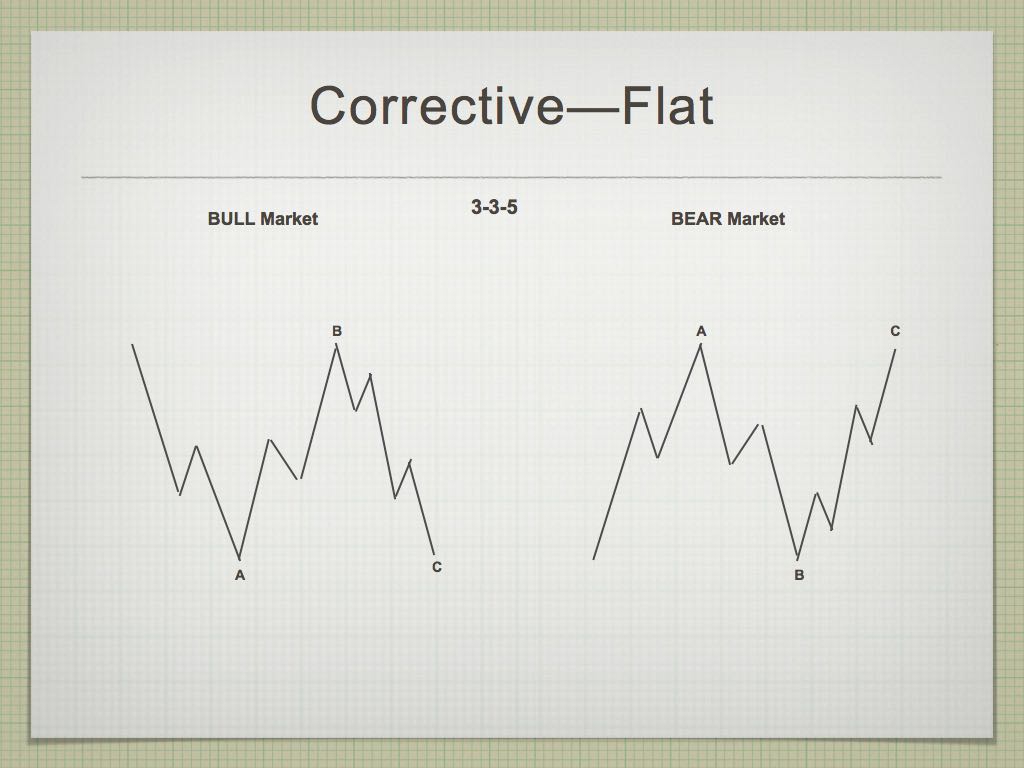
Flats are corrective waves, which means they run counter to the trend. Often people get these mixes up with an ending wave, which it is not. They are a 3-3-5 combination, but the last wave is not a motive wave (it should not have subwaves in 5’s, for example). The C wave can either end at the previous A wave or extend beyond it slightly.
Rules (these are “hard” rules; they cannot be broken)
- A flat always subdivides into three waves.
- Wave A is never a triangle.
- Wave C is always an impulse or a diagonal triangle.
- Wave B always retraces at least 90 percent of wave A.
Guidelines (guidelines can be broken but it’s rare that they are)
- Wave B usually retraces between 100 and 138 percent of wave A.
- Wave C is usually between 100 and 165 percent as long as wave A.
- Wave C usually ends beyond the end of wave A.
Notes
- When wave B is more than 105 percent as long as wave A and wave C ends beyond the end of wave A the entire fonnation is called an expanded flat.
- When wave B is more than 100 percent as long as wave A and wave C does not end beyond the end of wave A. the entire formation is called a running flat.



